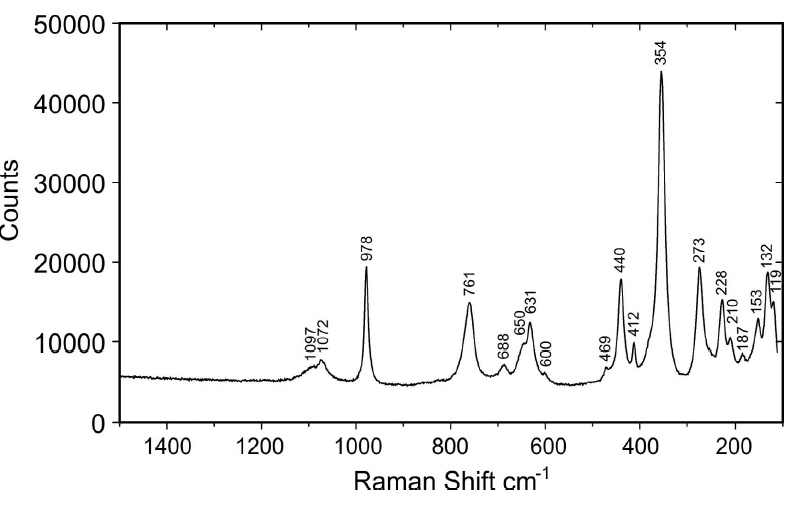Bodieite (IMA2017-117), Bi3+2(Te4+O3)(SO4), is a new
mineral from a dump near the North Star mine, Tintic district, Juab
County, Utah,
and the Pittsburg-Liberty mine, Masonic district, Mono County,
California, U.S.A. It is an oxidation-zone mineral occuring in vugs. Crystals
occur in a variety of habits, including bladed, acicular, steep pyramidal, and stepped tabular; they are generally elongate
on [001] and exhibit the forms {001}, {110}, {111}, and {111}.
The mineral ranges in color from colorless to yellow
to green. The streak is white, the luster is subadamantine to greasy, and crystals are transparent to translucent. The mineral is nonfluorescent under ultraviolet light. The Mohs hardness is about 2, the tenacity is brittle,
the cleavage is fair on {001}, and the fracture is irregular, stepped. The calculated
density
is 6.465 g/cm3. The mineral
is readily soluble
in dilute HCl at room temperature. Bodieite is biaxial
(–) with all indices of refraction > 2; 2Vmeas = 71.5°;
orientation X
= b;
nonpleochroic. The Raman spectrum
exhibits
bands clearly
fitting
tellurite
and sulfate groups.
Electron-microprobe
![]() analyses
gave
the
empirical
formula
(Bi1.95Te1.89As0.14Sb0.02)sum=4.00(S1.02O4)O6.
The
mineral
is monoclinic, space group I2/a, with a 8.1033(8), b
7.4302(8), c
14.6955(17) A˚ , b 97.771(9)8, V
=876.68(16) A˚3, and Z= 4. The six strongest X-ray powder diffraction lines are [dobs A˚ (I)(hkl)]: 7.31(20)(002), 3:331(62)(202; 12-1), 3.243(100)(121), 3:039(20)(-213), 2.716(25)(220,015), and 1.9013(21)(323).
The
structure
of bodieite contains Bi3+O3 and Te4+O3 pyramids
that
share
O vertices forming an undulating sheet parallel to {001}. Interlayer SO4
groups link the sheets via long Bi–O and Te–O bonds.
analyses
gave
the
empirical
formula
(Bi1.95Te1.89As0.14Sb0.02)sum=4.00(S1.02O4)O6.
The
mineral
is monoclinic, space group I2/a, with a 8.1033(8), b
7.4302(8), c
14.6955(17) A˚ , b 97.771(9)8, V
=876.68(16) A˚3, and Z= 4. The six strongest X-ray powder diffraction lines are [dobs A˚ (I)(hkl)]: 7.31(20)(002), 3:331(62)(202; 12-1), 3.243(100)(121), 3:039(20)(-213), 2.716(25)(220,015), and 1.9013(21)(323).
The
structure
of bodieite contains Bi3+O3 and Te4+O3 pyramids
that
share
O vertices forming an undulating sheet parallel to {001}. Interlayer SO4
groups link the sheets via long Bi–O and Te–O bonds.

Bodieite crystals
